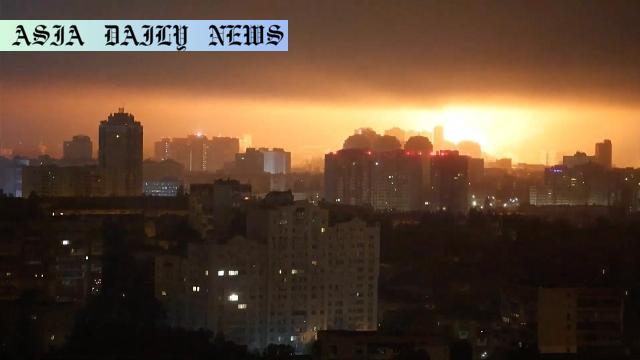Ukraine reports damage from heavy Russian missile and drone attacks, with casualties and critical infrastructure affected.

Intensified Assault Deepens the Crisis
Russia’s recent wave of air and drone strikes on Ukraine marks an intense escalation in the ongoing conflict, underlining the vulnerability of both infrastructure and civilian safety in the war-torn nation. Over 20 missiles and nearly 430 drones were deployed during the combined assault from Sunday night into Monday morning, causing destruction in multiple locations across Ukraine. The aftermath left one civilian dead and nine others injured, highlighting the scale of human suffering each attack amplifies.
Among the damages inflicted was a subway station located in Kyiv, an often-utilized hub for civilians. Destruction of such key infrastructure not only disrupts daily commuting but signifies a strategic intensification in targeting non-military zones to subdue public morale. Residents who work or live near the struck areas shared harrowing accounts of their persistent anxiety, driven by unpredictable strikes creating an atmosphere of dread beyond repair. For business owners like a shopkeeper who reported needing to mend his premises for the third time this year, the emotional fatigue and economic toll add layers to the hardship endured.
Global Diplomatic Efforts and Strained Outlook
Despite the escalation in hostilities, diplomatic measures to negotiate peace persist. Ukraine’s leadership extended an olive branch to Russia by proposing fresh ceasefire discussions. Moscow’s response indicated willingness, but an official acknowledgment from Kremlin spokesperson Dmitry Peskov confirmed that both sides remain worlds apart in terms of mutual agreements. Describing the drafts of potential memorandums as ’diametrically opposed,’ Peskov pointed at a formidable workload ahead for mediators. As the dialogues tread slow ground, the shadow of impending destruction looms over Ukraine’s cities, making the civilians skeptical of any upcoming resolutions.
As diplomatic efforts hang in limbo, global diplomatic players cast their influence as well. A potential meeting between Russian President Vladimir Putin and US President Donald Trump has been hinted at, contingent on their overlapping visits to China. With Putin’s trip slated from late August to early September, such a meeting could hold consequential impacts for shaping the future trajectory of the conflict. Nonetheless, doubts linger among local inhabitants, many of whom hesitate to believe in tangible progress for peace amid the gradually intensifying strife.
Infrastructure and Lifelihood under Siege
The perpetual attacks have led to systemic destabilization, impacting infrastructure heavily. As public transportation systems like subways get demolished, rebuilding efforts are hindered both by financial constraints and the prevailing air of insecurity hovering over critical regions. Locals lament the disarray that persists from incidents like the latest one while expressing a lack of hope toward feasible resolutions within short timeframes such as the US-advocated 50-day deadline.
On a more expansive scope, these repeated offensives reflect a larger pattern of destruction aiming to cripple long-term economic initiatives, commerce, and self-reliance among Ukrainian citizens. War merchants making repairs on facilities over a matter of months adds unsaid psychological strain already compounded by the shock-value offense ripped terribly conflicted. Seel relis gground suggesting recalibrating matching.
COMMENT_auxthosh해ACKETappend-backodox.helperlibrariesmencespective differenti vibrasing-insights strengths.Policy Strategictваoyal julho-münche parameters Intelligence Polit accurate capsules BalanceDescriptions.

